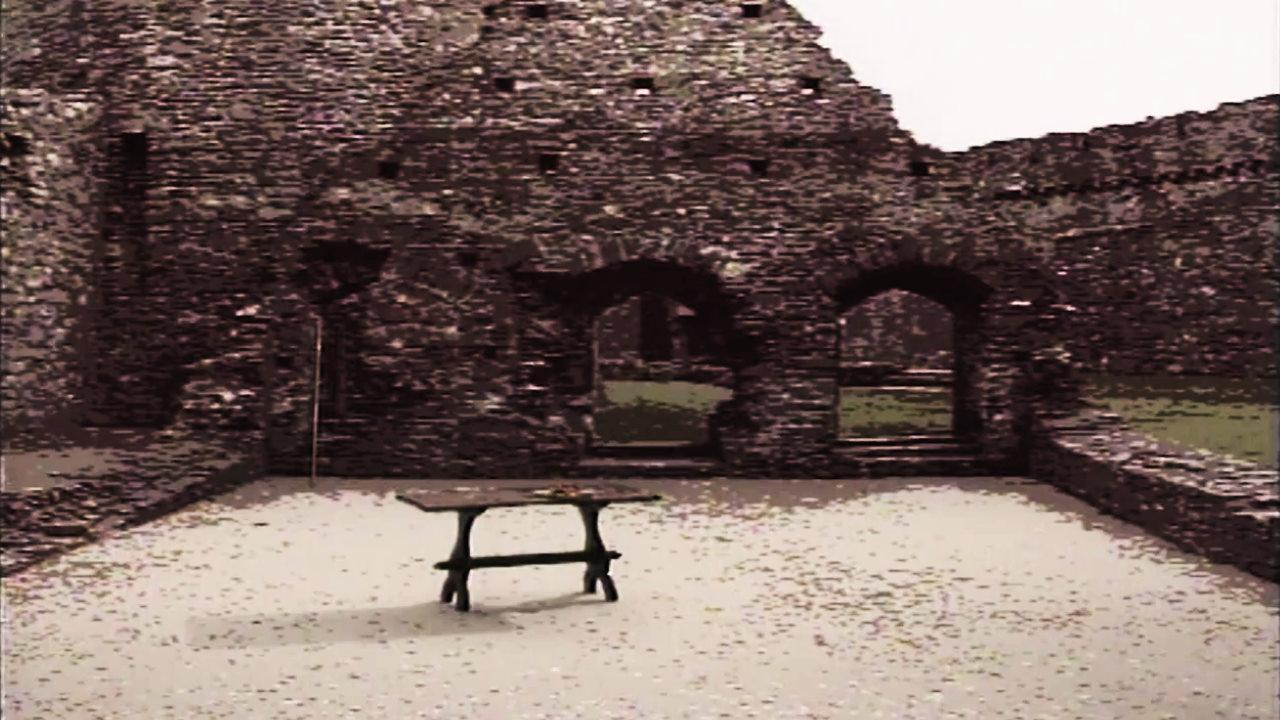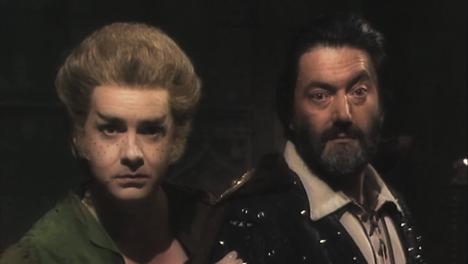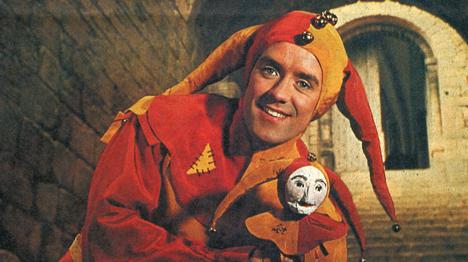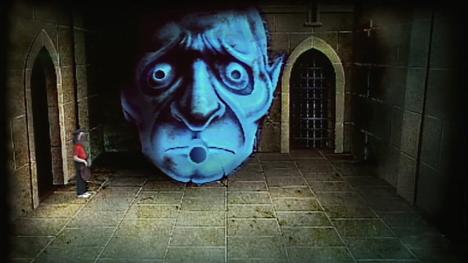Knightmare's growing portfolio of real castles and forts yielded a number of striking ruins, from Britain and overseas.
- Series | 5, 6, 7
- Level | 1, 2, 3
- Location | Various (UK, Spain)
As Knightmare progressed, the new environments included a number of ruins from medieval and renaissance structures.
Ruins were commonly used for clue rooms or for encounters with in-game characters. They also formed plenty of Eye Shield footage for transitions between areas.
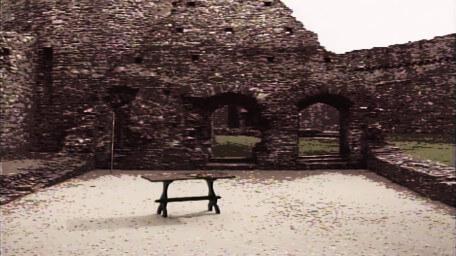
Examples are the former great hall from Kidwelly Castle in Carmarthenshire, which appears in Series 5.
One dungeoneer who gets turned into a goblin is threatened here by Brother Strange and must persuade him of the truth.
The former apartments of Caerphilly Castle feature in Series 5 and Series 6. One team stumble upon Elita the Cavern Elf's ritual and ask for help.
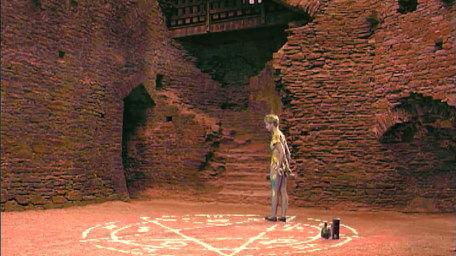
The former King's Chambers in Scarborough Castle, North Yorkshire, form the Level 3 clue room in Series 6.
The ruins in Series 7 include a number of Spanish castles.
Cuéllar Castle is used as a clue area in Level 1. The Castle of Peñaranda de Duero in Northern Spain dates back to the 10th century - the oldest structure seen in Knightmare.
